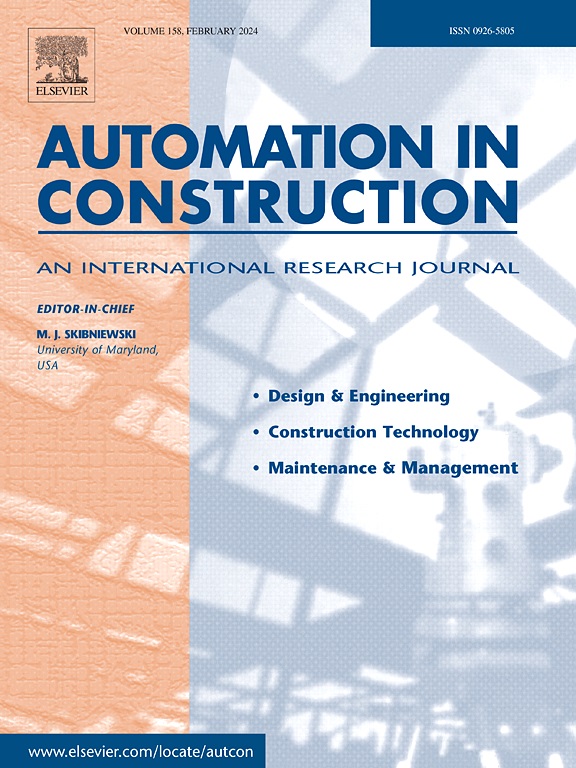BIM framework for efficient material procurement planning
IF 9.6
1区 工程技术
Q1 CONSTRUCTION & BUILDING TECHNOLOGY
引用次数: 0
Abstract
Inefficient procurement processes can lead to increased costs and project delays. Addressing information management inefficiencies is a significant but largely unexplored area within construction procurement strategies, despite potential for automation through Database Management Systems (DBMS) and Industry Foundation Classes (IFC). Subjective approaches constrain procurement planning, hindering optimal solutions. This paper addresses the gap by developing a comprehensive semi-automated procurement planning framework. The framework offers flexibility through a two-phased optimization employing Particle Swarm Optimization (PSO) or Genetic Algorithm (GA), integrated with a Building Information Modeling (BIM)-driven database platform compatible with various modeling software. It enhances decision-making by considering indirect costs and allowing installment payments while generating a 4D schedule for improved supply chain stakeholder visualization and decision-making (e.g., project managers), demonstrating improvements over traditional procurement plans in a real-world case study. The developed framework enables future research on integrating real-time data, predictive analytics, and smart contracts to further enhance procurement management.
高效材料采购规划的 BIM 框架
采购流程效率低下会导致成本增加和项目延误。尽管数据库管理系统(DBMS)和工业基础类(IFC)具有自动化的潜力,但在建筑采购战略中,解决信息管理效率低下的问题是一个重要领域,但在很大程度上尚未被开发。主观的方法限制了采购规划,阻碍了最佳解决方案的制定。本文通过开发一个全面的半自动化采购规划框架来填补这一空白。该框架通过采用粒子群优化(PSO)或遗传算法(GA)的两阶段优化,与兼容各种建模软件的建筑信息模型(BIM)驱动的数据库平台相结合,提供了灵活性。它通过考虑间接成本和允许分期付款来加强决策,同时生成 4D 时间表,以改进供应链利益相关者(如项目经理)的可视化和决策,在实际案例研究中展示了与传统采购计划相比的改进。所开发的框架有助于未来研究如何整合实时数据、预测分析和智能合约,以进一步加强采购管理。
本文章由计算机程序翻译,如有差异,请以英文原文为准。
求助全文
约1分钟内获得全文
求助全文
来源期刊

Automation in Construction
工程技术-工程:土木
CiteScore
19.20
自引率
16.50%
发文量
563
审稿时长
8.5 months
期刊介绍:
Automation in Construction is an international journal that focuses on publishing original research papers related to the use of Information Technologies in various aspects of the construction industry. The journal covers topics such as design, engineering, construction technologies, and the maintenance and management of constructed facilities.
The scope of Automation in Construction is extensive and covers all stages of the construction life cycle. This includes initial planning and design, construction of the facility, operation and maintenance, as well as the eventual dismantling and recycling of buildings and engineering structures.
 求助内容:
求助内容: 应助结果提醒方式:
应助结果提醒方式:


